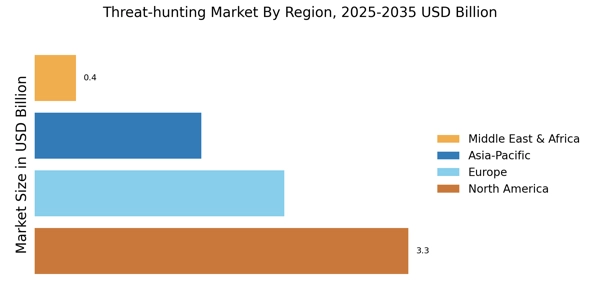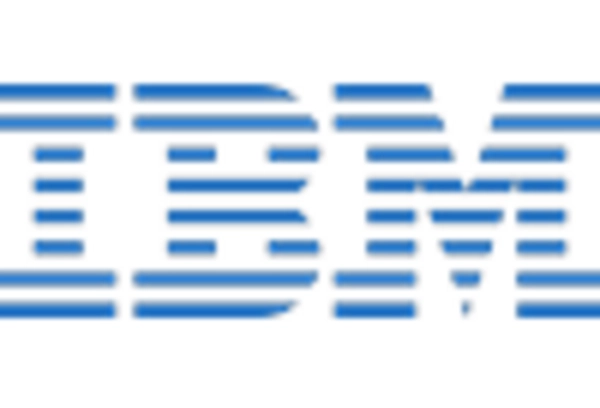The Threat-hunting Market is currently characterized by a dynamic competitive landscape, driven by the increasing sophistication of cyber threats and the growing demand for proactive security measures. Major players such as CrowdStrike (US), Palo Alto Networks (US), and Darktrace (GB) are at the forefront, each adopting distinct strategies to enhance their market positioning. CrowdStrike (US) emphasizes innovation through its cloud-native Falcon platform, which integrates AI and machine learning to provide real-time threat detection. Meanwhile, Palo Alto Networks (US) focuses on expanding its global footprint, recently enhancing its threat-hunting capabilities through strategic acquisitions and partnerships. Darktrace (GB), on the other hand, leverages its self-learning AI technology to offer unique insights into emerging threats, thereby differentiating itself in a crowded market. Collectively, these strategies not only bolster individual company profiles but also intensify the competitive dynamics within the market.
In terms of business tactics, companies are increasingly localizing their operations to better serve regional markets, optimizing supply chains to enhance efficiency, and investing in advanced technologies to stay ahead of threats. The competitive structure of the Threat-hunting Market appears moderately fragmented, with a mix of established players and emerging startups. This fragmentation allows for diverse approaches to threat-hunting, as companies leverage their unique strengths to capture market share and respond to evolving customer needs.
In August 2025, CrowdStrike (US) announced a significant partnership with a leading telecommunications provider to enhance its threat-hunting capabilities across mobile networks. This collaboration is poised to expand CrowdStrike's reach into new customer segments, particularly in the telecommunications sector, where the demand for robust security solutions is surging. The strategic importance of this partnership lies in its potential to integrate advanced threat intelligence with mobile security, thereby addressing a critical vulnerability in the digital landscape.
In September 2025, Palo Alto Networks (US) unveiled a new suite of threat-hunting tools designed specifically for cloud environments. This launch reflects the company's commitment to addressing the unique challenges posed by cloud security, as organizations increasingly migrate their operations to the cloud. By enhancing its offerings in this area, Palo Alto Networks (US) positions itself as a leader in cloud security, potentially attracting a broader customer base seeking comprehensive protection against cloud-based threats.
In July 2025, Darktrace (GB) secured a major contract with a multinational financial institution to implement its AI-driven threat-hunting solutions. This contract not only underscores the growing trust in Darktrace's technology but also highlights the increasing recognition of AI's role in cybersecurity. The strategic significance of this contract lies in its potential to validate Darktrace's approach and further establish its reputation as a pioneer in the application of AI for threat detection and response.
As of October 2025, the competitive trends within the Threat-hunting Market are increasingly defined by digitalization, AI integration, and a heightened focus on sustainability. Strategic alliances are becoming more prevalent, as companies recognize the value of collaboration in enhancing their capabilities and market reach. Looking ahead, competitive differentiation is likely to evolve, shifting from traditional price-based competition to a focus on innovation, technological advancement, and supply chain reliability. This transition suggests that companies that prioritize these elements will be better positioned to thrive in an increasingly complex and competitive environment.


















Leave a Comment